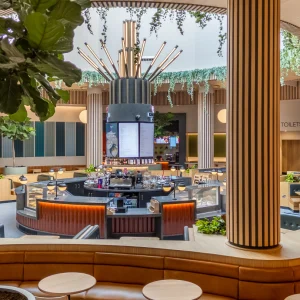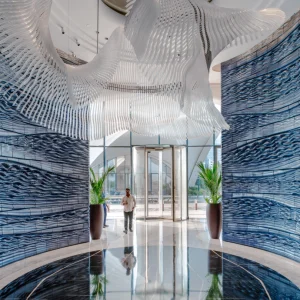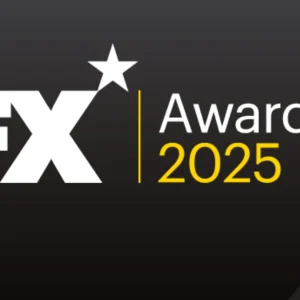Edited by Scarlett walker-hebborn
What current or historical trend has inspired you personally in terms of office design?
The increased value placed on sensory perception and engaging our senses in the experience of a space, I find very inspiring. The trend for the office to become more entwined with a feeling of comfort influenced by a more ‘domestic’ feeling has been an ongoing evolution where the boundaries are becoming increasingly blurred. Exacerbated by the pandemic, the post-pandemic world has expedited and brought to the centre stage how we as human beings experience our surroundings through the senses.
At Woven Image, our terminology has also evolved from referring to office as workplace. Spaces for work are now being explored not only via function but more increasingly via experience encapsulating sensory perception.
Has office product design become more adventurous over the past 30 years. If so, in what way?
Yes, I think so. Namely through the exploration of colour, for example, and the bravery of interior designers and architects to specify more adventurous colourways and combinations of colour to influence the experience of a space. The evolution of bringing the outside in has also been a strong trend over the last 30 years that is becoming the norm in interiors, plant and moss walls, for example, and the more recent conversations around biophilic design are increasingly relevant here.
Has manufacturing and product design moved with the times?
Yes and no – it depends on the process and product. For example, digital printing innovations have greatly moved with the times, providing almost limitless pattern repeat dimensions and the ability to produce seamless gradient designs at varying sizes, which historically has been a limitation in print manufacturing. Digital printing also allows for more bespoke design solutions for customers without a huge minimum order quantity.
 Amy Saunders
Amy Saunders
Where I think there is some delay in connecting the dots from a manufacturing perspective is the ability to support sustainable manufacturing and the circular economy. There is a challenge we are facing regarding the current existing material waste from end-of-life products – i.e. Where are they going? What is the balance of commercially viable and biodegradable new materials and product solutions which are designed for dematerialisation?
Do you commission freelance designers or recruit in-house designers?
Woven Image has a vast history of design and artist collaborations, from supporting up-and-coming designers to renowned industry icons. We couple these different signature styles with our own in-house designers to provide a point of difference to our product portfolio whilst maintaining our Woven Image contemporary look and feel.
Which exhibitions do you visit for inspiration/research?
These days mostly Milan Furniture Fair and the city itself during the fair when showrooms and designers open their doors to share their latest innovations. Based in Singapore, I often find inspiration in the Asia-Pacific region from exhibitions of famous artists to small ceramics and homewares fairs.
What have been your main drivers for your company’s most recent collection?
As Woven Image celebrates 20 years of EchoPanel, our hero innovation in design for dematerialisation, we continue to expand its colour palette with recent nature-inspired additions including Dusk, Butter, Cayenne, Nutmeg and Mint. Also celebrated is EchoPanel’s Carbon Neutral certification by Climate Active. Later in 2024, we will unveil our latest product release, Macro Rhythms, which showcases 3D formed acoustic panels Curtain and Column. This will be previewed at Material Matters and within The Collective showroom, our UK distribution partner, during the London Design Festival. Exciting times as we forge ahead in the ongoing evolution of design-led product solutions for interior spaces.





